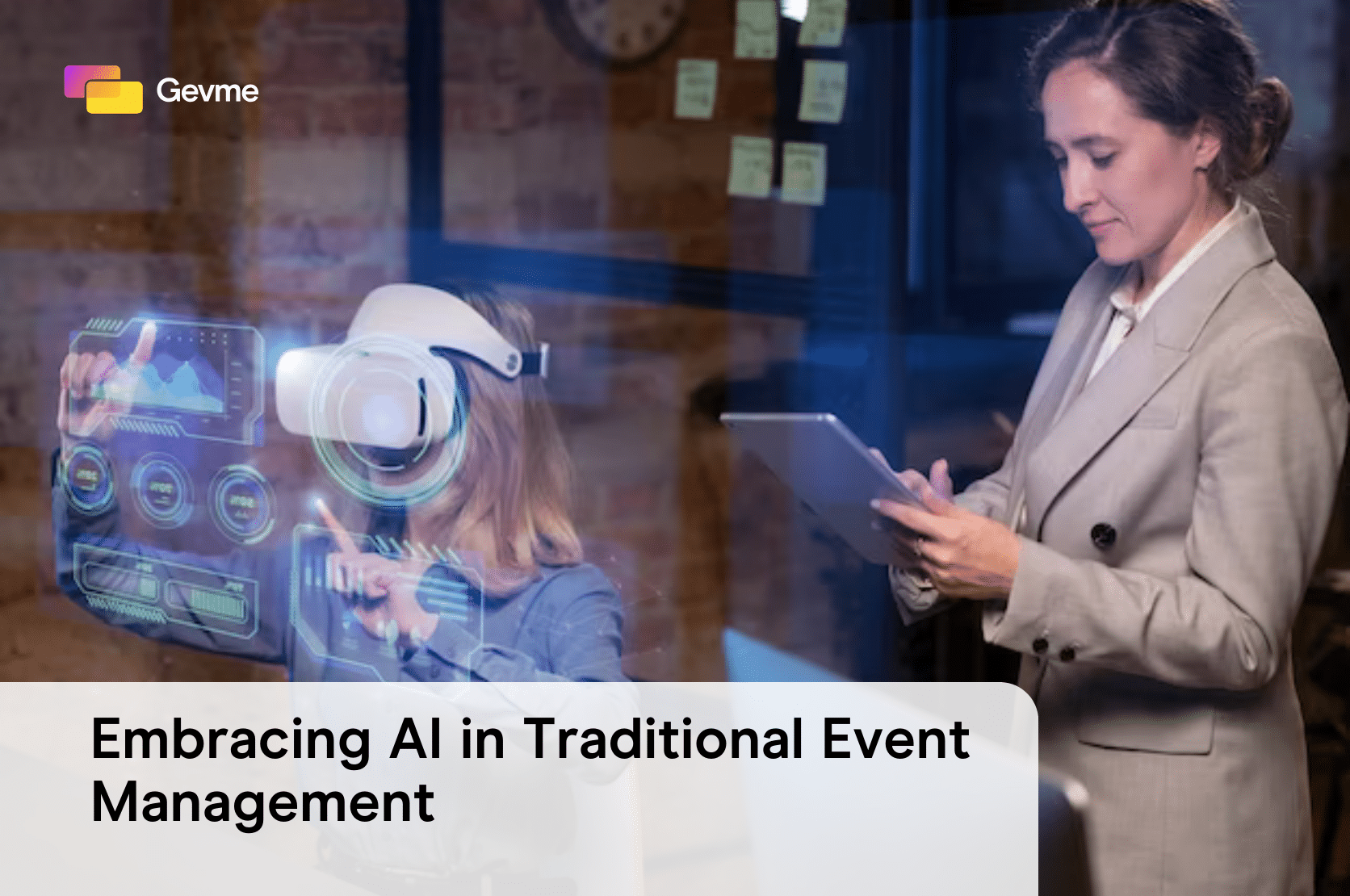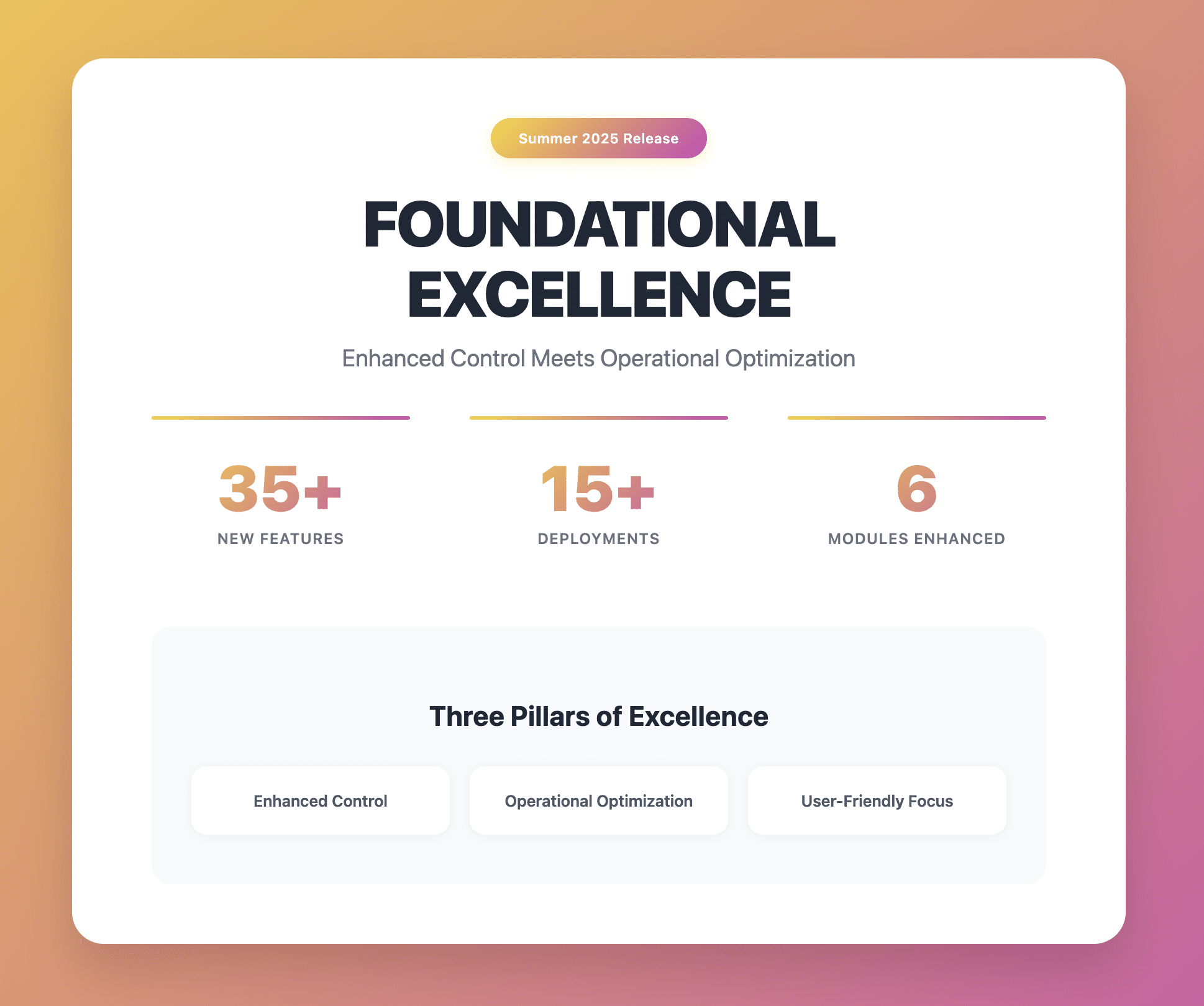The integration of AI in event management marks a significant shift in an industry traditionally reliant on human expertise and experience. While AI in event management offers innovative possibilities, its incorporation into established practices presents numerous challenges.
This blog explores these challenges, delving into the complexities and nuances of blending AI with traditional event management methods. We will examine the hurdles event professionals face as they navigate this technological integration, striving to harness the benefits of AI while maintaining the essence of traditional event planning.

Understanding Traditional Event Management Practices
Traditional event management has its unique methodologies that significantly differ from the AI-driven approaches now emerging:
- Personal Touch in Planning: In conventional planning, the emphasis is on building and maintaining personal relationships. This includes detailed, often face-to-face, interactions with clients to understand their vision and preferences, and a hands-on approach to vendor selection and management based on personal trust and historical collaborations.
- Manual Coordination and Logistics: Traditional methods are characterized by extensive manual effort in coordinating logistics. Event planners often personally oversee details like venue layout, catering arrangements, guest accommodations, and transportation logistics, relying on direct communication and physical site visits.
- Experience-Based Decision Making: Decision-making in traditional event management is deeply rooted in personal experience and instinct. Planners draw upon their historical knowledge of what works and what doesn’t, often relying on anecdotal evidence and subjective judgment rather than data-driven insights.
- Attendee Engagement Strategies: Engagement strategies in traditional event management focus on direct human interaction. This includes creating immersive experiences through live entertainment, face-to-face networking opportunities, and engaging in-person activities, aiming to create memorable experiences through a human-centric approach.
- Feedback and Improvement Processes: Traditional feedback mechanisms typically involve post-event surveys, one-on-one conversations with key stakeholders, and in-person debriefings. Improvements for future events are often based on this qualitative feedback, alongside the planner’s observations and experiences.
- Marketing and Promotion Techniques: These techniques often blend traditional advertising methods with direct, personal marketing efforts. Strategies might include print advertising, physical mailers, billboard advertising, and leveraging personal networks for word-of-mouth promotion, focusing on building brand recognition and event anticipation in a tangible, relatable manner.
- Resource Management: Resource management in traditional event planning involves established practices for budgeting, staffing, and scheduling. Planners often rely on their experience and industry norms to allocate resources, manage event staff, and schedule activities, prioritizing reliability and proven success over innovative or untested methods.
Technical Challenges of Integrating AI in Events
The integration of AI into traditional event management is met with complex technical hurdles:
- Compatibility with Existing Systems: Integrating AI with existing event management tools often presents compatibility issues. This may require significant system reconfigurations or even the replacement of legacy systems to ensure seamless integration of AI technologies.
- Complexity of AI Technology: The inherent complexity of AI poses a significant challenge. It demands specialized skills and understanding, which traditional event management teams may not possess. Training or hiring personnel with AI expertise becomes a necessity.
- Data Integration and Analysis: The effectiveness of AI in event management hinges on integrating and analyzing diverse data sets. However, organizing disparate data sources into a format that AI can effectively process and analyze is often a daunting task, requiring sophisticated data management strategies.
- Infrastructure Requirements: Implementing AI in event management requires robust technological infrastructure. This includes advanced computing power and storage solutions to handle large volumes of data, which can entail significant investments.
- Reliability and Accuracy Issues: AI systems can face issues with reliability and accuracy, especially in dynamic event environments. Ensuring that AI models are well-trained and capable of adapting to real-world variables is a substantial challenge.
- Security Concerns: The use of AI in event management for managing sensitive event data brings heightened security concerns. Establishing robust cybersecurity measures to protect against data breaches and ensuring compliance with data protection laws is critical.
- Ongoing Maintenance and Updates: AI systems require continuous maintenance, monitoring, and updates to ensure they remain effective and secure. This ongoing requirement can be resource-intensive and requires a long-term commitment to the technology.

Cultural and Organizational Resistance
The integration of AI in event management often encounters cultural and organizational barriers:
- Resistance to Change: Many individuals and organizations are comfortable with established practices and may view the integration of AI in event management as an unnecessary disruption. This resistance often stems from apprehension about new technologies, reluctance to learn new systems, or skepticism about AI’s effectiveness.
- Shift in Organizational Culture: Embracing AI necessitates a cultural shift towards technology and innovation. This can be particularly challenging in organizations with a strong adherence to traditional practices and a less tech-centric approach.
- Perceived Threat to Jobs: Concerns about job security can create resistance. Employees might fear that AI’s ability to automate tasks will make their roles redundant or significantly alter their job responsibilities.
- Adaptation to New Processes: Transitioning to AI-driven processes often requires a significant adjustment in everyday workflows. For staff accustomed to traditional methods, this change can be daunting, especially if they lack training in the new technology.
- Communication and Collaboration Barriers: Integrating AI in event management successfully requires effective communication and collaboration across various departments. In organizations with rigid hierarchies or compartmentalized structures, this cross-departmental cooperation can be challenging.
- Building Trust in AI Systems: Developing trust in AI systems is crucial but not easy. Concerns about the reliability, accuracy, and ethical implications of AI can hinder acceptance among both staff and external stakeholders.
- Leadership and Vision for AI Integration: For successful AI integration, strong leadership is essential. This involves not just endorsing AI adoption but also providing a clear vision, support, and resources necessary for the transition.
Data Management and Privacy Concerns
Addressing data management and privacy in AI integration within event management is complex:
- Complexities of Data Collection: AI’s effectiveness depends on comprehensive and varied data. This entails not only gathering attendee information but also understanding and aligning it with the specific goals and themes of different events, which can be a multifaceted and sensitive process.
- Data Storage and Security: Safeguarding the stored data is paramount. This involves implementing robust cybersecurity measures and constantly updating them to protect against evolving threats and vulnerabilities, especially given the personal nature of attendee information.
- Navigating Data Privacy Laws: Complying with data privacy regulations, which can vary greatly across different regions and countries, presents a significant challenge. This requires a thorough understanding of laws like GDPR and ensuring all AI applications are compliant.
- Ethical Use of Data: Ethical challenges arise in how collected data is utilized to influence attendee experiences. It’s crucial to use this data responsibly, avoiding scenarios where AI manipulations could lead to negative experiences or perceptions.
- Consent and Transparency: Gaining explicit consent from attendees for data collection and maintaining transparency about its usage is challenging yet essential. Clear communication about data use policies and privacy safeguards is necessary to build trust.
- Data Quality and Integration: Ensuring the accuracy and consistency of data, and effectively consolidating it from diverse sources for AI analysis, is vital for obtaining reliable insights and outcomes.
- Balancing Personalization with Privacy: Striking a balance between offering personalized experiences through AI and upholding attendee privacy is intricate. It involves making data-driven decisions that enhance the event experience while respecting individual privacy boundaries.

Cost and ROI Considerations
Addressing the financial aspects of the integration of AI in event management is a multi-layered process:
- Initial Investment Costs: Incorporating AI in event management often involves significant initial expenditures. These expenses include not only the cost of AI software and licenses but also potential upgrades to existing infrastructure, purchasing new hardware, and integrating systems.
- Cost of Training and Development: The transition to AI-driven practices necessitates comprehensive training for existing staff. This training goes beyond basic usage, encompassing an understanding of AI’s capabilities and limitations, which can be a substantial ongoing investment.
- Maintenance and Support Costs: AI systems, like any technology, require regular maintenance, technical support, and updates to function optimally. These costs can be considerable, especially if external vendors or consultants are required for specialized support.
- Measuring Return on Investment (ROI): Calculating the ROI of AI integration is complex. While direct financial gains can be measured, quantifying indirect benefits such as improved attendee experiences, enhanced decision-making efficiency, or long-term cost savings can be challenging.
- Cost-Benefit Analysis: Performing a detailed cost-benefit analysis is essential. This analysis should consider not only the immediate financial impact but also the potential long-term advantages such as increased event attendance, higher attendee satisfaction, and more efficient resource utilization.
- Balancing Budget Constraints: For many event organizers, especially smaller enterprises, balancing the costs of AI integration with existing budget constraints is a significant challenge. This often requires prioritizing certain AI functionalities over others based on cost-effectiveness and impact.
- Long-Term Financial Planning: Integrating AI in event management is not just a one-time cost but a long-term financial commitment. This planning should account for future technological advancements, the potential need for system upgrades, and the evolving landscape of AI capabilities.

Training and Skill Development
Expanding the capabilities of event staff to effectively use AI in event management is a multi-faceted challenge:
- Upskilling Event Staff: This involves comprehensive training in AI technologies, extending beyond basic operational knowledge to understanding how AI can strategically enhance event planning and execution. It encompasses training in data analysis, AI tool utilization, and the interpretation of AI-generated insights.
- Bridging the Technology Gap: The technology gap between traditional practices and AI-driven methods is often substantial. Bridging this gap necessitates tailored training programs that cater to varying levels of tech proficiency among staff.
- Creating an AI-literate Workforce: Establishing a workforce proficient in AI entails educating staff not only on the technical aspects but also on the broader implications of AI, including data interpretation, ethical considerations, and the potential impact of AI decisions on event outcomes.
- Collaboration between Tech Experts and Event Teams: Fostering a collaborative environment where technology experts and event management teams can share knowledge is crucial. This synergy allows for a mutual understanding where tech teams gain insights into event management specifics, and event staff understand the potential and limitations of AI technologies.
- Continuous Learning and Adaptation: AI in event management is a rapidly evolving field. Adapting to these changes requires a commitment to ongoing education and flexibility to continually update skills and knowledge.
- Cost and Resource Allocation for Training: Allocating sufficient resources, both in terms of budget and time, for comprehensive training poses a significant challenge. However, this investment is essential for the successful integration of AI in event management.
- Overcoming Resistance to New Skills: Addressing resistance, particularly from staff accustomed to traditional methods, requires a careful approach that includes demonstrating the tangible benefits of AI, providing reassurance about job security, and offering support throughout the learning process.
Balancing AI and Human Element
Successfully integrating AI into traditional event management requires a nuanced balance between technology and the human element:
- Maintaining Personalization and Empathy: It’s essential to preserve the personal touch that human interactions bring, especially in understanding and responding to the nuanced needs of clients and attendees, which AI might not fully replicate.
- Ensuring AI Complements Human Roles: AI should be strategically used to enhance, not replace, human roles. Identifying functions where AI can increase efficiency, such as data analysis or logistical planning, while keeping human elements in creative decision-making and personal interactions is vital.
- Managing Customer Expectations: As AI becomes a more prominent part of event management, clearly communicating its role to attendees and managing their expectations about the balance between automated and human services is important.
- Cultural Sensitivity and Understanding: Human planners bring an understanding of cultural nuances and emotional intelligence that is critical for the diverse and dynamic nature of event planning, an aspect that AI currently cannot fully replicate.
- Training Staff to Work Alongside AI: Beyond technical training, staff should be equipped to understand how to best collaborate with AI tools, utilizing these technologies to enhance their work rather than compete with them.
- Addressing Ethical Concerns: Balancing AI implementation with ethical considerations, particularly regarding data privacy and attendee consent, requires ongoing human oversight and ethical decision-making.
- Adapting to AI Advancements: Keeping up with the rapid advancements in AI technology and continually adapting event management strategies to leverage these developments while maintaining human-centric services is crucial.

Conclusion
As the event industry evolves, integrating AI into traditional event management practices presents a range of challenges. However, with thoughtful strategy and careful implementation, these challenges can be transformed into opportunities for growth and innovation. Event management platforms like Gevme are navigating this transition, demonstrating how AI can be integrated responsibly while maintaining the crucial human element in event management. By embracing both the power of AI and the value of human interaction, event professionals can create more dynamic, efficient, and personalized event experiences.








